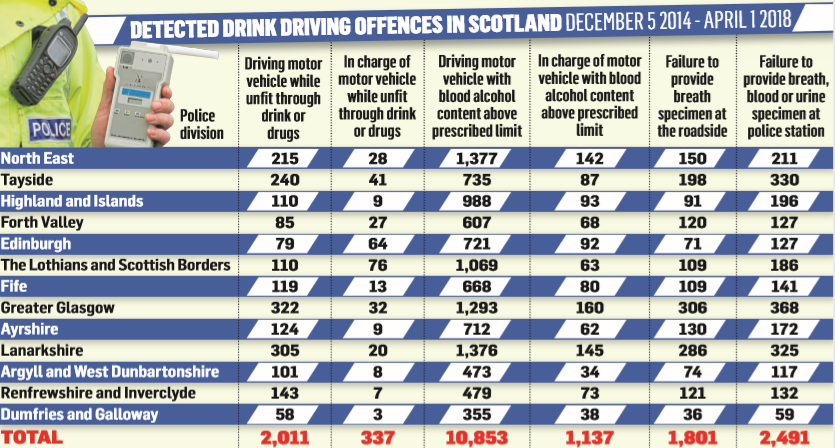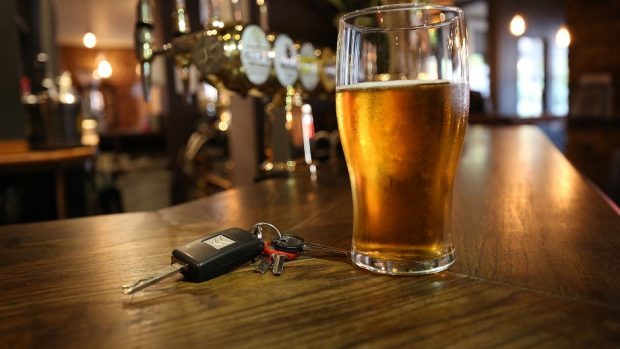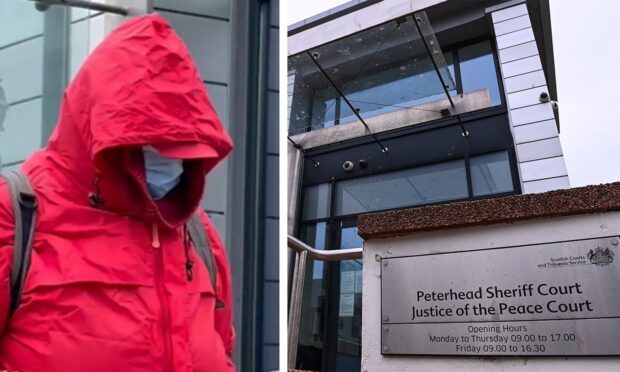More motorists have been caught boozing behind the wheel in the north-east than anywhere else in Scotland since the new drink-drive limits were brought in.
New figures reveal that 1,377 motorists in Grampian have been caught drink-driving between December 5, 2014 and April 1 this year.
Over the same period, 988 motorists in the Highlands were caught with a blood alcohol content higher than the limit.
The figures for the north-east are worse than Lothian, Greater Glasgow and Edinburgh.
In total, 10,853 offenders across Scotland have been caught using blood tests since the drink-drive limit was lowered.

Police officers started to enforce the new legal alcohol limit for drivers on December 5, 2014. It was reduced from 80mg in every 100ml of blood to 50mg.
As a result of the changes, it became significantly easier for drivers to break the law with just one drink compared to England, Wales and Northern Ireland, where the blood alcohol limit remained the same.
However, police have repeatedly insisted that the only safe number of drinks you can have before getting in the driver seat is none at all.
North East MSP Lewis Macdonald said the high frequency of drink-driving recorded by police across Aberdeen, Aberdeenshire and Moray was alarming when compared to the population levels in the Central Belt.
He said: “The obvious standout figure here is that drink seems to be substantially above average in the north-east police division.
“However, if it was in line with population share, it should be a lot lower – and this suggests that it really is a serious issue in the region, and should be a cause of concern for a lot of people as drink driving can cause so much harm, not least the danger to life.
“More must be done to prevent people deciding to use their vehicles after they’ve had a drink in the north-east, because the consequences can be extremely dire.”
Aberdeenshire East MSP Gillian Martin added: “It is the responsibility of road users in the north-east to make sure when they get behind the wheel of a vehicle they are tee-total.
“It is incredibly disappointing to see these figures. A decision to drink and drive is incredibly reckless as it puts not only your own life at risk, but it also puts the lives of others at risk too.”
David Stewart, MSP for the Highlands and Islands region, added: “In general the change in drinking culture has resulted in people being more thoughtful when going out for a drink and being more aware of the implications of drinking and driving.
“But according to the figures, clearly not everyone has got the message.”










